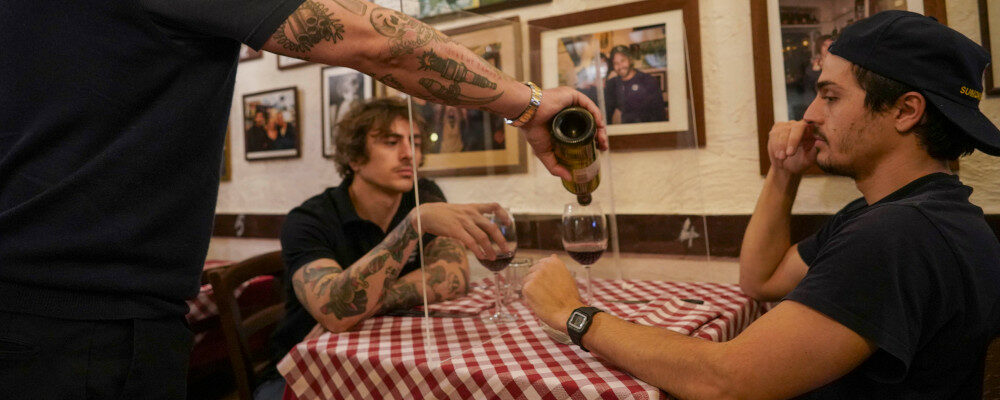Last Sunday my wife took me to see Pressure at the Royal Alexandria Theatre. The play, by David Haig, is about forecasting the weather for D-Day and was brought over after a run in Edinburgh with its original cast. I enjoyed both the performance and the theatregoing, which was itself a post-pandemic novelty.
The Royal Alex was built in 1907, when people were smaller and before the Spanish Flu. The seating is intimate, and one can keenly hear every cough and candy wrapper crinkle from the audience members. It felt odd to be in close contact, again after the pandemic, with 1,200 or so of my fellow human beings.
It also made me feel kind of young. At 50, if there was a bell curve chart where x was the age of the audience member and y the number of them of that age, I would have been well to the left of the top of the bell curve. Apparently, live theatre is not, these days, the pursuit of the young.
Looking at the audience at intermission I was reminded of a recent piece by the New York Times wine columnist, Isaac Asimov. It was given the headline “The American Wine Industry Has an Old People Problem”, and covered the latest edition of an annual report from a vice president of the Silicon Valley Bank, Rob McMillan. The report is entitled “The State of the U.S. Wine Industry”, and apparently wine is not, these days, the pursuit of the young.
The problem, according to McMillan, and reported by Asimov, is that young people are not drinking cheap wine, the kinds of wine that cost under $US 15 (roughly $CAD 20) that the industry considers the gateway wines to a lifetime of oenophilia. Conversely, the report found that the biggest area of consumer growth was among 70 to 80-year-olds.
The California-based wine writer Alder Yarrow took up the topic of the report with a post on his website, Vinography, with a long read piece illustrated with pictures of elderly zombies drinking wine and entitled “The Wine Industry is Headed for Self-Inflicted Decrepitude”. Citing McMillan, Yarrow complains of wine trade indifference to young consumers, who increasingly prefer ready-to-drink beverages like hard seltzers. He concludes, “If it doesn’t wake up and smell which way the wind is blowing, the American Wine Industry is soon going to get the customers it deserves.”
The report, and the reporting on the report, are about American wine sales to American consumers, but they track in my house. My 19-year-old son and his friends are happy to drink our (more than $20 a bottle) wines at the dinner table when home from university. But if they come over to hang out for an evening, or buy supplies to go to a party, I see a lot of cans of White Claw and the like, or beer.
At the theatre I wondered if fine wine was going the way of the performing arts. Would it lose the interest of young people and become the pastime of the elderly? Would it lose its market viability? Would drinking fine wines be akin to going to the opera and ballet? Would wine only exist at the pleasure of wealthy patrons and government subsidies? Would there be a Canada Council of Sommeliers to decide which wines would make it onto restaurant lists?
Every field has its contrarians, and one of the better and more thoughtful ones in the American wine world is journalist and author Jason Wilson, who publishes the newsletter Every Day Drinking. In a piece, nominally about pairing Chardonnay with Indonesian food, Wilson pushes back on the conventional reception of the report:
All of this overheated talk is somewhat ‘sky is falling.’ For U.S. wine consumers, there’s essentially a line in the sand: 15 bucks. Above that is what the industry calls ‘premium wines,’ and those sales are relatively robust. Below that price point is a vast ocean of American mass-market wines—and sales of these lousy wines are in decline. That’s apparently the worry. But why? Why is the industry so worried about the decline of garbage wines? I mean, boohoo, right?
As it turns out, also in the report is the news that sales of wines over $US 15 are doing fine, among all age groups. This also tracks in my house: when my son came back for a visit from Montreal recently, he brought us a bottle of premium-priced natural wine.

It also tracks with me. There are a lot of wines priced under $CAD 20 that I might pass on in favour of a White Claw.1There are, of course, also lots of wines under $20 that are delicious, rewarding, and good bargains, but you have to look a little bit harder to find them. There are also more than a few over $20, for that matter. Mass-produced, industrial wines at any price often have cloying amounts of sugar, all manner of additives (which aren’t listed on the label), and high percentages of alcohol by volume.
I bet that a majority of people under 30 years old who drink wine had parents who drank wine. I’m Generation X, born in the ’70s, and I can remember vaguely when my Silent Generation parents, born in the ’40s, began to shift from cocktails and beer to wine in the 1980s.
For people my age, the wine revolution, which really took off in the ’90s, is like the internet: though it’s shaped us, we can remember what was like before it came along. And we had to acquire the skills to master it as it evolved.
People in their 20s and 30s were born into the thick of the explosion of popular interest in wine, and may well have acquired some relatively sophisticated tastes in the family dining room before entering the consumer fray.
The kids are alright. More than that, they seem to know what they’re doing better than any generation that came before. Makers, sellers, and consumers of well-made wine need not worry. We’ll have much to toast at any age.




